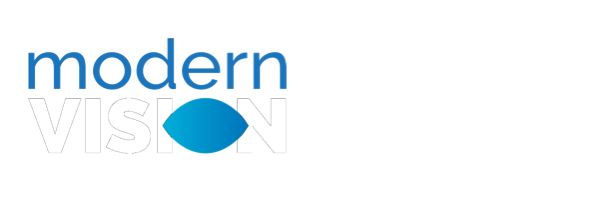This section is an excerpt from an article written by Lance Kugler, MD:
Kugler L, Wang M. Lasers in refractive surgery: history, present, and future. Applied Optics. 2010;49(25) F1-F9 Also published in: Virtual Journal for Biomedical Optics. 2010;5(13)”
Introduction to human refractive error
The remarkable ability of the human eye to deliver information from the world around us would not be possible without the complex optical system within its anatomic structures. The inner layer of the posterior surface of the eye is called the retina. The retina contains cells that transmit light information to the visual cortex of the brain via the optic nerve. The optical system of the eye is responsible for focusing the incoming rays onto the center of the retina, called the fovea, in order to form a sharp, clear image.
The structures responsible for the refraction of light as it enters the eye are the cornea and the crystalline lens. The cornea maintains a constant refractive power, an average of 45 diopters (1/m), corresponding to F ~ 22mm. The lens, in contrast, is able to dynamically change its refractive power and thus the focal point of the eye. In an emmetropic eye incoming photons are focused by the cornea and lens to maintain an image on the fovea. Due to the complexity of the eye’s optical system, it is common for the focal point of a given eye to be either in front of the fovea or behind the fovea. Eyes with a focal point somewhere other than the fovea are said to have refractive error, or ametropia.
Figure 1 illustrates myopia, commonly known as nearsightedness, and hyperopia, or farsightedness. In a myopic eye, light rays converge in front of the retina causing a defocused image on the fovea. Conversely in a hyperopic eye the image forms behind the fovea causing a defocused image. Factors leading to the development of myopia and hyperopia are complex and not completely understood, but there is evidence that many cases are due to an abnormally long or short axial length.[1] Recent studies suggest the prevalence of myopia is increasing.[2]
In an eye with astigmatism light rays do not focus on a single point in all meridians. Variations in the curvature of the cornea or lens in perpendicular meridians cause incoming parallel light rays to be focused into different focal points. An astigmatic eye may be classified by the orientation of these meridians. If such meridians are not perpendicular to each other, or other irregularities in the optical system create additional focal points, the eye is said to have irregular astigmatism. Irregular astigmatism often causes high order aberrations which lead to decreased visual quality.[3-5]
A normal cornea is a monofocal refracting structure meaning that it focuses light from a single distance. The crystalline lens, however, can change its refractive power. Accommodation is the ability of the lens to increase its refractive power in order to see at near. Presbyopia is an age related decrease in accommodative amplitude of the lens. Adolescents are able to accommodate 12-15 diopters, whereas adults age 40-50 are able to accommodate 4-8 diopters. After age 50 accommodation decreases to less than 2 diopters. [6]
Principles of laser surgical correction of refractive error:
2a. Cornea-based laser refractive surgery (keratorefractive surgery):
In a myopic eye, the axial length is too long relative to the refractive power of the cornea, thus the focal point is anterior to the fovea. Therefore correction of myopia is achieved by flattening the anterior corneal surface. Conversely in a hyperopic eye the axial length is too short relative to the refractive power of the cornea thus the cornea may be steepened in order to achieve emmetropia. In an astigmatic eye, the steeper of the two meridians must be flattened more than the flatter meridian, thus flattening is performed in an elliptical pattern.
A presbyopic eye that is emmetropic for distance vision requires spectacles in order to see at near. Although presbyopia results from a problem within the lens and not the cornea, it is possible to surgically alter the cornea in such a way to make it multifocal thus providing a near focal point and a distance focal point. To achieve such multifocality, one area of the cornea is steepened to improve near vision, and one area of the cornea is flattened to improve distance vision.[7] The quality of vision is compromised in a multifocal cornea in exchange for the ability to focus at near and distance without corrective lenses. Another corneal based approach to correcting presbyopia is the Karma Corneal Inlay (Acufocus, Inc, Irvine, CA). The inlay is inserted into a pocket created in the corneal stroma with a femtosecond laser. The inlay functions as an aperture thus increasing depth of field and near vision (Figure 2). Disadvantages of this technology include glare, halos, and potentially decreased visual performance in dim light, however early data on the effectiveness of the device is encouraging.[8]
2b. Lens-based laser refractive surgery
The natural lens may be surgically removed and replaced with an artificial lens matched to the cornea and axial length of the eye to focus incoming light on the fovea. The power of the artificial lens inserted after cataract surgery or lens removal is selected based upon calculations that use a combination of theoretic optics and regression analysis. Despite several decades of refinement of the formulas, there is still a clinically significant margin of error leading to a suboptimal refractive result after surgery in some eyes[9]. One solution involves a light adjustable lens made of photosensitive silicone molecules (silicone matrix polymer, photoreactive macromer, photoinitiator, and UV absorber) that may be adjusted days to weeks after the lens is implanted into the eye. The index of refraction or shape of the lens may be changed by exposing the lens to UV light (365nm) in the surgeon’s clinic to correct any remaining refractive error.[10]
Attempts to use lasers to improve the lens’ ability to accommodate after the onset of presbyopia are also underway. The femtosecond laser has been used to create cavitation bubbles within the lamella of the lens to reduce friction to soften the lens thus enhancing its ability to change shape and accommodate (Figure 3).[11]
The excimer laser
The word excimer is a contraction of the term “excited dimer.” The excimer laser is an excited dimer that produces a beam of ultraviolet energy at various wavelengths depending upon the gas elements used. The absorption spectrum of the cornea is such that light of wavelengths under 400nm are absorbed by the cornea whereas longer wavelengths transmit through the cornea without tissue interaction.[12] Studies have shown that at 248nm the energy causes DNA mutations, and at 308nm it causes cataracts in the lens of the eye. It was determined that the ideal wavelength for corneal refractive surgery should be 193nm.[13,14] The laser has submicron precision at this wavelength with minimal collateral tissue damage or thermal effect. At 193nm, the laser removes an average of 0.25 microns of corneal tissue per pulse, which varies slightly depending on factors such as the angle of incidence between the laser and the corneal tissue.[15,16]
The other parameters of excimer lasers vary depending on manufacturer and model. One commonly used laser platform in the United States is the Visx Star S4 (Abbott Laboratories Inc., Abbott Park, Illinois, USA). The Visx laser has a fluence of 160 mJ/cm2, a pulse duration of 15-30ns, and a pulse rate of 20hz.[17] It is able to correct 1 Diopter of myopia in 3.5 seconds. Another common laser platform is the Allegretto Wavelight EyeQ laser (WaveLight GmbH, Erlangen, Germany). This laser has a fluence of 180mJ/cm2, pulse duration of 12ns, and a pusle rate of 400Hz.[18] This laser is able to correct 1 Diopter of refractive error in 2 seconds.[19]
3a. The history of excimer laser application to refractive surgery
The clear optical media of the eye lends itself well to the use of lasers to modify anatomy and treat disease. The argon laser was first used in the 1960s to treat retinal disease, and the neodymium-doped yttrium aluminum garnet (Nd:YAG) laser was first used in 1979 to treat a common post-cataract surgical complication called capsular opacity. Therefore, the concept of using a laser to change the cornea’s refractive power was intriguing to many ophthalmologists.
In the early 1980’s, Beckman and Peyman and their associates demonstrated that a carbon dioxide laser may be used to create thermal shrinkage of the cornea thereby changing corneal contour.[20] Shortly thereafter John Taboada reported that the argon-fluoride excimer laser had the ability to indent eye tissue without causing collateral tissue damage.[21] Dr. R. Srinvasan, a photochemist working at IBM who had been using the 193nm excimer laser to etch microprocessors, demonstrated to Dr. Stephen Trokel, an ophthalmologist who was intrigued by the possibility of using this technology to reshape the cornea, that the excimer laser could be used to ablate organic tissue. Trokel experimented with animal corneas, and in 1983 he and Srinvasan published an article introducing the concept of using the excimer laser for refractive surgery.[22]
Seiler, a German ophthalmologist, was the first to use the excimer laser on blind human eyes.[23] The initial experiments, in 1985, attempted to reproduce the keratotomy procedures, typically performed with a blade, that were popular at the time. The hope was that the precision of the laser would lead to more predictable results than were possible with a blade. This turned out to be incorrect. Charles Munnerlyn, a laser engineer, developed a formula to determine the amount of tissue removal necessary to reshape the cornea to induce a change in the cornea refraction. He continued his work and designed the first excimer laser intended to reshape the cornea.[24]
The procedure was called photorefractive keratectomy (PRK) and involved the ablation of the surface of the cornea to flatten its central portion in order to correct nearsightedness. Following the initial procedures in Germany by Seiler, Dr. Marguerite McDonald performed the first PRK on a human eye in the United States in 1988. Shortly thereafter, clinical trials began and the procedure was approved in the United States in 1995.[25,26]
By the early 1990’s, Pallikaris and Buratto and their associates had combined lamellar splitting (using the blade of a microkeratome to make a corneal flap, based on Barraquer’s pioneering work forty years earlier) with excimer laser ablation of the exposed corneal bed. This procedure took the moderately successful automated lamellar keratoplasty (ALK) procedure and added the incredible accuracy of the excimer laser which significantly improved the results. Pallikaris termed this combination LASIK (laser in-situ keratomileusis).[27]
The LASIK procedure avoids anterior stromal haze and pain which are frequently associated with PRK. This result is achieved because the laser is applied only within the corneal substance therefore avoiding damage to the corneal epithelium (the thin, outer surface layer of the eye). With LASIK, the epithelium remains almost entirely intact thus the nerve endings stay protected, there is minimal pain during recovery, and there is a lower risk of infection and scarring. The initial clinical trials of LASIK in the United States began in 1996. These clinical investigations culminated in the approval by the FDA of the LASIK procedure in 1999.[28]
3b. Current state of excimer laser corneal refractive surgery
Conventional excimer laser surgery
Conventional excimer laser procedures are based upon the patient’s refraction (glasses prescription) as measured in the clinic. The laser energy is typically delivered by beam of energy delivered centrally over the pupil. One common method of conventional laser ablation involves the use of an expanding diaphragm which enlarges the beam to achieve a central zone of flattening, in the case of a myopic treatment, in the center of the cornea. Conventional treatments are accurate and dependable and have been the mainstay of treatment since the inception of excimer laser refractive surgery. The main advantage of conventional treatments is that the treatment plan is not dependent upon readings by an automated optical instrument. The primary disadvantage of conventional treatments is that they treat only low-order optical aberrations and are unable to treat higher order aberrations.
Wavefront-optimized excimer laser surgery
Wavefront-optimized surgery is an enhanced version of conventional surgery. Although existing high order aberrations are not treated, the laser ablation is adjusted based on the patient’s refraction and corneal curvature to minimize any increase in high order aberrations (particularly spherical aberration) induced by the treatment. So whereas the goal of wavefront-guided surgery is to identify and treat multiple high order aberrations, the goal of wavefront-optimized surgery is only to limit any increase in spherical aberration during the treatment. Because spherical aberration is thought to be the most common high order aberration that is induced by myopic excimer laser surgery, results of wavefront-optimized treatments are similar or better than wavefront-guided treatments [32-35].
4. The femtosecond laser
4a. Historical Perspective
Femtosecond lasers are infrared lasers in the 1053nm range that create subsurface corneal incisions by using non-linear laser energy absorption process known as photodisruption. Through this process the laser pulse itself increases the optical absorption properties of the material, thus a transparent material can be made to absorb optical energy in regions of high optical intensity.[36] Such areas of intensity are created by precise focus of the short-pulse laser beam, which transforms the material into plasma. The precise focus of this energy allows for a completely localized surgery is possible with minimal collateral tissue damage.[37] Shorter pulses have been found to require less energy than do long pulses, hence the “femtosecond” laser which operates at pulse durations of 10^-15 seconds.[38] To achieve these short pulses, they are stretched in duration from 200 femtoseconds to 50 picoseconds, amplified, and then recompressed to 500 femtoseconds prior to delivery.[39] Femtosecond pulses break down the material uniformly and reproducibly, thus are well suited for precise incisions in the cornea.[40] The femtosecond laser pulses are delivered at a repetition rate of 1 to 150kHz via a complex system of computer-controlled mirrors. When delivered in a linear plane within the corneal stroma, and when placed within a few microns of each other, they form a confluent dissection plane or incision.[41] With each pulse the laser vaporizes small volumes of tissue with the formation of cavitation gas bubbles consisting of carbon dioxide and water, which eventually dissipate into the surrounding tissues.[37].
4b. Femtosecond lasers for LASIK flap creation
The femtosecond laser is primarily used to create a LASIK flap within the corneal stroma (figure 5). The laser allows precise control of flap architecture not obtainable with a traditional mechanical microkeratome.[41-46] Once the LASIK flap is created, an excimer laser is used to reshape the cornea. Data regarding differences in results between LASIK performed with a mechanical microkeratome compared to LASIK performed with a femtosecond laser so far suggest that femtosecond flaps are associated with improved visual results,[47,48] however many surgeons prefer mechanical microkeratomes based on their own experience.[49] A major barrier to adaptation of femtosecond laser technology is the cost associated with purchase and use of the technology, which can add hundreds of dollars to the cost of each procedure. A recent market survey concluded that 68% of all LASIK flaps created in 2009 were created with a femtosecond laser[50] which is up from 30% in 2006.[51]
4c. Other keratorefractive surgery applications of femtosecond laser
The femtosecond laser has proven to be effective in creating relaxing incisions in the corneal stroma to flatten the cornea within a specific meridian to correct astigmatism. Such incisions, termed astigmatic keratotomy, have historically been made with a blade. The femtosecond laser, however, is able to create the incisions with increased precision.[52]
Because the gas bubbles remain in the corneal stroma for over 6 months, attempts at flattening the central cornea to treat myopia failed. Treatment of hyperopia, however, may be done in the periphery outside the visual axis and therefore is not affected by the retained gas bubbles. Some investigators are using the femtosecond laser to create Intrastromal incisional patterns that steepen the central cornea thus creating a multifocal cornea.[53]
5. Future enhancements to excimer laser refractive surgery
Video keratography, or corneal topography, is the term given to computer-assisted mapping of the corneal surface (figure 6). Topography has been used for over 20 years to diagnose corneal disease and screen for conditions that may cause problems after laser surgery. The most common method involves the two dimensional projection of concentric rings, also known as Placido-Discs, onto the cornea with subsequent computer analysis of the rings’ relationship to each other.[54] Three dimensional methods, including scanning slit and Scheimpflug image analysis (Figure 7), are gaining in popularity. Recently, topography devices are being linked to excimer laser platforms to create laser ablation profiles that are customized to the corneal shape. Such topography-guided treatments are distinguished from wavefront-guided treatments because wavefront analysis measures the optical properties of the entire ocular pathway, including the internal optics of the crystalline lens, whereas topography measures only the cornea. One proposed advantage of topography-guided treatment is that it focuses the data acquisition and treatment plan precisely on the anatomical structure that will be surgically modified, the cornea, thus directly addressing the problem at its source. This is particularly important in the treatment of eyes that have an irregular corneal surface as a result of a prior LASIK related complication and therefore require another laser procedure to correct the irregularity. Topography data may be combined with wavefront data to further enhance treatment of irregular astigmatism and high order aberrations. Topography guided treatments are gaining traction internationally, and trials are underway in the United States with FDA approval expected within the next few years.[55,56]
Due to the complexity of the optics involved, astigmatism has always been more difficult to accurately treat with refractive surgery than have other refractive errors.[29] One factor contributing to the inaccuracy is the fact that astigmatism may arise from intraocular structures, such as the lens, yet laser refractive surgery is only able to reshape the corneal surface. By correcting the astigmatism present in the entire optical system solely by altering the cornea, the treatment result is compromised. The concept of vectors in astigmatism correction is gaining traction within the refractive surgery community. Vector planning helps design a laser treatment plan that minimizes the irregularity induced in the cornea while correcting as much astigmatism as possible.[56,57] The ideal refractive surgery system is likely one that incorporates all methods of correction: clinical refraction, wavefront analysis, topography analysis, and astigmatism vector planning.[55]
6. Conclusion
Modern laser refractive surgery is the result of centuries of work by brilliant scientists, physicians, and engineers. To date there have been over 16.3 million LASIK procedures performed worldwide, and a recent study concluded that 95.4% of patients were satisfied with their outcome following the procedure.[58] This astoundingly high success rate, which is higher than other elective surgical procedures, has led to excimer laser refractive surgery becoming one of the most popular elective surgeries in all of medicine. Innovation continues at a rapid pace with the future holding promise for even more accurate results and new techniques to correct previously untreatable conditions.



